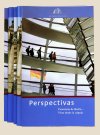Statistics concerning the Election of the 17th German Bundestag
Around 62.2 million Germans living in the territory of the Federal Republic of Germany will be entitled to vote in the elections to the 17th German Bundestag on 27 September 2009, the Federal Statistical Office has estimated: 32.2 million women and 30 million men. Hence the number of people entitled to vote will be slightly higher than during the 2005 Bundestag elections, when it amounted to about 61.9 million.
The electorate includes approximately 3.5 million first-time voters who will have become legal adults since the previous Bundestag elections. 1.7 million women and 1.8 million men will have turned 18 by the day of the election and thus will be entitled to vote in Bundestag elections for the first time. All young Germans who were born between 19 September 1987 and 27 September 1991 will be able to vote for the first time.
The table below shows the expected age structure of the electorate for the 2009 Bundestag elections. Please visit the Federal Returning Officer’s website at www.bundeswahlleiter.de to access additional information.
Estimated breakdown of the electorate for the 2009 Bundestag elections by age group and sex
| Age (years | Male (millions) |
Female (millions) |
Total (millions) |
Proportion of electorate |
|---|---|---|---|---|
| 18 - 20 | 1,3 | 1,3 | 2,6 | 4,2 % |
| 21 - 29 | 3,9 | 3,7 | 7,6 | 12,2 % |
| 30 - 39 | 4,3 | 4,2 | 8,5 | 13,7 % |
| 40 - 49 | 6,5 | 6,3 | 12,8 | 20,6 % |
| 50 - 59 | 5,3 | 5,3 | 10,6 | 17,0 % |
| 60 - 69 | 4,2 | 4,5 | 8,7 | 14,0 % |
| 70 and over | 4,5 | 6,9 | 11,4 | 18,3 % |
| Total | 30,0 | 32,2 | 62,2 | 100,0 % |
Source: Press release of the Federal Returning Officer
Electorate by Land (federal state)
| Land (federal state) | Estimate in millions |
|---|---|
| Baden-Württemberg | 7,7 |
| Bavaria | 9,3 |
| Berlin | 2,5 |
| Brandenburg | 2,1 |
| Bremen | 0,5 |
| Hamburg | 1,2 |
| Hesse | 4,4 |
| Mecklenburg-Western Pomerania | 1,4 |
| Lower Saxony | 6,1 |
| North Rhine-Westphalia | 13,5 |
| Rhineland-Palatinate | 3,0 |
| Saarland | 0,8 |
| Saxony | 3,5 |
| Saxony-Anhalt | 2,0 |
| Schleswig-Holstein | 2,2 |
| Thuringia | 1,9 |
Source: Press release of the Federal Returning Officer


